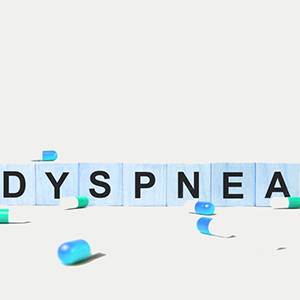Home-based unsupervised pulmonary rehabilitation program improves the respiratory disability in systemic sclerosis patients with dyspnea: an observational prospective study

Submitted: June 21, 2021
Accepted: December 17, 2021
Published: December 28, 2021
Accepted: December 17, 2021
Abstract Views: 1267
PDF: 583
Publisher's note
All claims expressed in this article are solely those of the authors and do not necessarily represent those of their affiliated organizations, or those of the publisher, the editors and the reviewers. Any product that may be evaluated in this article or claim that may be made by its manufacturer is not guaranteed or endorsed by the publisher.
All claims expressed in this article are solely those of the authors and do not necessarily represent those of their affiliated organizations, or those of the publisher, the editors and the reviewers. Any product that may be evaluated in this article or claim that may be made by its manufacturer is not guaranteed or endorsed by the publisher.
Similar Articles
- Massimiliano Polastri, Lara Pisani, Andrea Dell'Amore, Stefano Nava, Revolving door respiratory patients: A rehabilitative perspective , Monaldi Archives for Chest Disease: Vol. 87 No. 3 (2017)
- Paolo Ruggeri, Federica Lo Bello, Francesco Nucera, Michele Gaeta, Francesco Monaco, Gaetano Caramori, Giuseppe Girbino, Hereditary hyperhomocysteinemia associated with nephrotic syndrome complicated by artery thrombosis and chronic thromboembolic pulmonary hypertension: A case report , Monaldi Archives for Chest Disease: Vol. 87 No. 3 (2017)
- Gianfranco Beghi, Antonio De Tanti, Paolo Serafini, Chiara Bertolino, Antonietta Celentano, Graziella Taormina, Monitoring of hospital acquired pneumonia in patients with severe brain injury on first access to intensive neurological rehabilitation: First year of observation , Monaldi Archives for Chest Disease: Vol. 88 No. 1 (2018)
- Madalina Macrea, Richard ZuWallack, Linda Nici, There’s no place like home: Integrating pulmonary rehabilitation into the home setting , Monaldi Archives for Chest Disease: Vol. 87 No. 2 (2017)
- Marinella Sommaruga, Elisabetta Angelino, Paola Della Porta, Mara Abatello, Giacomo Baiardo, Gianluigi Balestroni, Ornella Bettinardi, Edward Callus, Chiara Ciracì, Ombretta Omodeo, Claudia Rizza, Paolo Michielin, Marco Ambrosetti, Raffaele Griffo, Roberto F.E. Pedretti, Antonia Pierobon, Best practice in psychological activities in cardiovascular prevention and rehabilitation: Position Paper , Monaldi Archives for Chest Disease: Vol. 88 No. 2 (2018)
- Abhishekl Agarwal, Sakshi Batra, Rajendra Prasad, Anand Verma, Abdul Q. Jilani, Surya Kant, A study on the prevalence of depression and the severity of depression in patients of chronic obstructive pulmonary disease in a semi-urban Indian population , Monaldi Archives for Chest Disease: Vol. 88 No. 1 (2018)
- E. Crisafulli, S. Loschi, C. Beneventi, A. De Biase, B. Tazzioli, A. Papetti, C. Lorenzi, E.M. Clini, Learning impact of education during Pulmonary Rehabilitation program. An observational short-term cohort study , Monaldi Archives for Chest Disease: Vol. 73 No. 2 (2010): Pulmonary series
- E.M. Clini, P. Siddu, L. Trianni, R. Graziosi, E. Crisafulli, M.T. Nobile, Activity and analysis of costs in a dedicated weaning centre , Monaldi Archives for Chest Disease: Vol. 69 No. 2 (2008): Pulmonary series
- Claudio F. Donner, Sandro Amaducci, Elena Bacci, Sandra Baldacci, Maria L. Bartoli, Gianfranco M. Beghi, Alida Benfante, Sara Brighindi, Lucio Casali, Daniela Castiglia, Mario Cazzola, Alessandro Celi, Silvana Cianchetti, Giorgio Colombo, Claudia Crimi, Federico L. Dente, Giuseppe Di Maria, Annalisa Di Maria, Manuela Latorre, Federico Lavorini, Sara Maio, Claudia Mannini, Riccardo Messina, Pier Luigi Paggiaro, Patrizia Pignatti, David Price, Nicola Scichilone, Marzia Simoni, Antonio Spanevello, Martina Stagno d’Alcontres, Shawna Tan, Roberto Torchio, Giovanni Viegi, Dina Visca, Emiel F.M. Wouters, Shaylynn Yu Hui Xin, Inhalation therapy in the next decade: Determinants of adherence to treatment in asthma and COPD , Monaldi Archives for Chest Disease: Vol. 88 No. 1 (2018)
- Joo Ock Na, Dong Soon Kim, Seong Ho Yoon, Yang Jin Jegal, Woo Sung Kim, Eung Suk Kim, Myung Wha Kim, A simple and easy home-based pulmonary rehabilitation programme for patients with Chronic Lung Diseases , Monaldi Archives for Chest Disease: Vol. 63 No. 1 (2005): Pulmonary series
You may also start an advanced similarity search for this article.

 https://doi.org/10.4081/monaldi.2021.1984
https://doi.org/10.4081/monaldi.2021.1984





